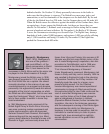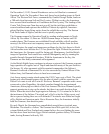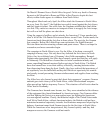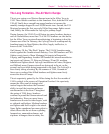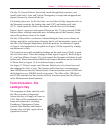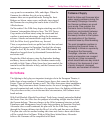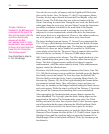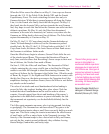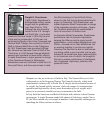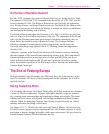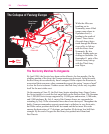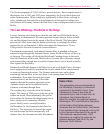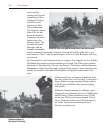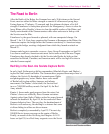
152
Close Combat
Over the first two weeks of January, both the Eighth and Fifth Armies
close on the Gustav Line. On January 15, the II Corps captures Monte
Trocchio, the last major obstacle between the River Rapido valley and
Monte Cassino. The Fifth Army has now achieved contact with the
Gustav Line along its entire front. During the next week, the British will
make gains along the west coast, but near Monte Cassino the Americans
are unable to maintain a foothold on the north bank of the Rapido.
Several times small forces succeed in crossing the river, but all are
subjected to vicious counterattacks which either drive the Americans
back across the river or wipe them out. However, this offensive achieves
one of its objectives
it pulls German forces away from Anzio.
The Anzio landings begin on January 22. General Lucas commands the
U.S. VI Corps, which includes four American and four British divisions
along with Commando and Ranger units. The landings are conducted in
textbook style
there are only a handful of casualties as 36,000 men
come ashore on the first day. The port at Anzio is captured intact and by
the end of the day on January 23, there are 50,000 troops ashore.
Still, Lucas is cautious in his advance. The Allies push inland only a few
miles, consolidating their gains as they advance, rather than racing for
Rome. This lack of aggressiveness enables Kesselring to organize
reinforcements, which he orders rushed to Anzio. These reinforcements
begin to contest the Allied advance.
Elsewhere, the Fifth Army continues to hammer at the Gustav Line. The
U.S. 34th Division keeps trying to establish a foothold across the Rapido;
they finally succeed on January 26. Four days later, the British Fifth
Division finally cracks the Gustav Line by capturing Monte Natale. On
the same day (January 30), the Allies begin attacking the German defen-
sive perimeter around Anzio. They suffer heavy losses and gain very
little; only six members of the Ranger battalion leading the attack survive
and evade capture. While the attack is called off on February 2, the attack
does prevent the Germans from launching their own counterattack.
After regrouping, the Germans launch a major offensive against the
Anzio beachhead. The Luftwaffe joins the attack, hitting targets on the
ground and in the harbor. The Germans make some gains, but Allied
artillery and naval fire slow, then stop the attack. It now becomes appar-
ent to Kesselring that he cannot eliminate the Allied beachhead. Both
sides settle in to rest and refit; the Anzio front is quiet for ten days.
On February 29, the Germans again try to break the Allied lines at Anzio.
Elements of four German divisions hit the U.S. Third Division. Again the
fighting is fierce and the casualties high, but again the Germans fail to
break through. When a final attack on March 3 fails, the Germans go on
the defensive.
“Actually, I believe our
fondness for the BAR was more
concerned with the type of fire
than with the weapon itself. We
would have been equally
pleased with the Bren
gun
perhaps more so. What
we yearned for was a good gun
to throw a lot of lead, faster and
harder than the Tommy Gun.
This the Browning did…”
From
Shots Fired in Anger
by
Lt. Col. John George



